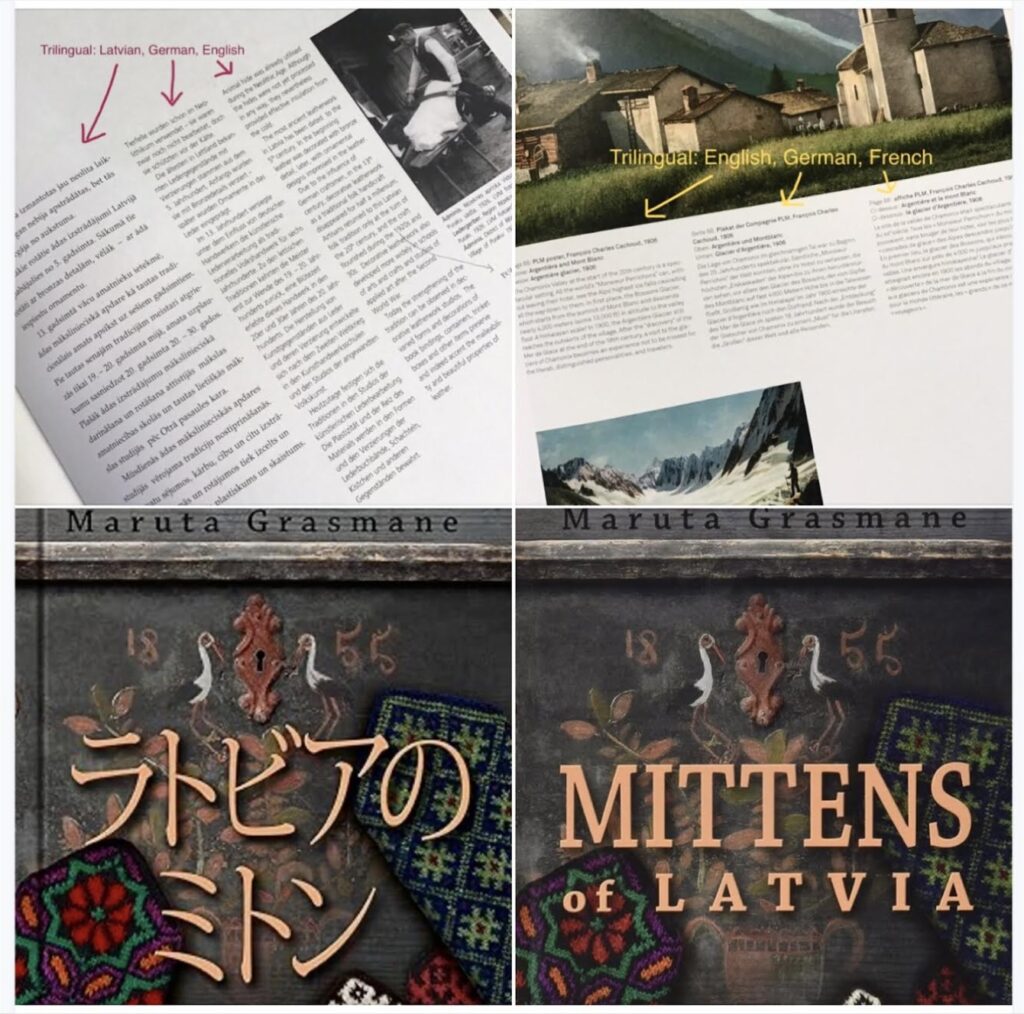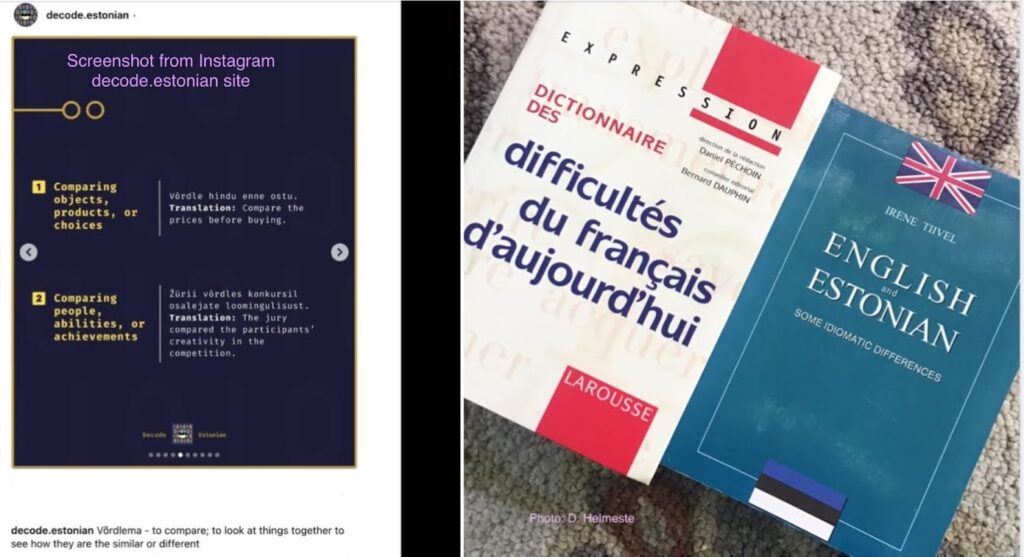For example, in science, publishers have historically leaned towards publishing textbooks for large numbers of readers. This keeps book costs down and book sales up, especially if there is no grant funding available.
If one is contemplating publishing a more general book, targeting smaller language groups, and also seeking to reach a wider audience, the book publishing company Taschen is a good example to emulate. As shown in the accompanying photos, they routinely publish trilingual books (e.g. English, German, and French) to reach a larger audience.

…the Japanese are huge fans of arts and crafts from the Baltic region. With that in mind, SENĀ KLĒTS, the National Costume Centre in Riga, has published the book Mittens of Latvia in Latvian, English, German, Norwegian, Japanese, French, and Estonian.
In Estonia, the number of Kihnu language speakers is approximately 600. To promote tourism there and reach a wider audience, for example, one could consider publishing Kihnu language books in trilingual editions instead of in the Kihnu dialect only; such as (1) Kihnu, (2) Estonian, plus (3) Latvian, German, Finnish, English, French, or even Japanese (among others) as the third language. The addition of Japanese may come as a surprise to some people, but actually, the Japanese are huge fans of arts and crafts from the Baltic region. With that in mind, SENĀ KLĒTS, the National Costume Centre in Riga, has published the book Mittens of Latvia in Latvian, English, German, Norwegian, Japanese, French, and Estonian.

On the topic of Kihnu, for people interested in reading Kihnu literature, note that there is a Kihnu language dictionary available online ( https://arhiiv.eki.ee/dict/kihnu/index.cgi? ), but currently no platform for it on Google Translate. The positive side of this is that, for people fluent in both Kihnu dialect and other dialects and languages, you have an immediate advantage should you be interested in creating a new language translation startup in the region. By contrast, the Latgalian dialect has recently been added to the Google Translate platform. Approximately 150,000 people currently speak Latgalian, predominantly in the Latgale region of eastern Latvia.
For people interested in publishing bilingual language texts for new language learners, I highly recommend emulating resources like decode.estonian, which is available on Instagram. For young children, I am also a huge fan of Pumpkin & Stretch on the Eesti Elu YouTube channel/website. They incorporate audio and written Estonian/English in entertaining short video presentations online.

Is being multilingual uncommon in today’s world? It appears to be relatively uncommon in many regions of North America, but common in post-World War Two Europe. I can give two examples from my parents’ generation. According to the Australian Dictionary of Biography, by Anthony Blackshield, my father’s Estonian cousin, Professor Ilmar Tammelo, “spoke fifteen languages fluently, including Esperanto, of which he was a keen advocate. Although he wrote mainly in English and German, his writings were published in eight other languages.” My mother’s Latvian relative, the foreign law librarian Adolf Sprudzs, who resided in Chicago after World War Two, was noted for being knowledgeable in a number of different languages. “Besides Latvian and English, Mr. Sprudzs spoke fluent German and French and had a reading knowledge of several other languages.” (Ref: Legal Information Management, 4(2004) pp.73-74, title: Adolf Sprudzs: In Memoriam).
Learning additional languages and sharing that knowledge with others is more possible than ever! Wishing everyone a happy journey towards literary globalism.



